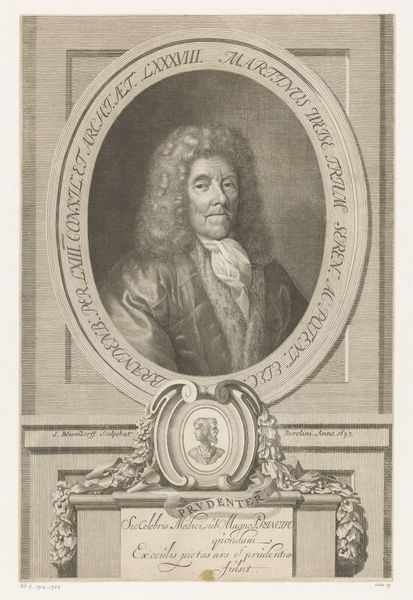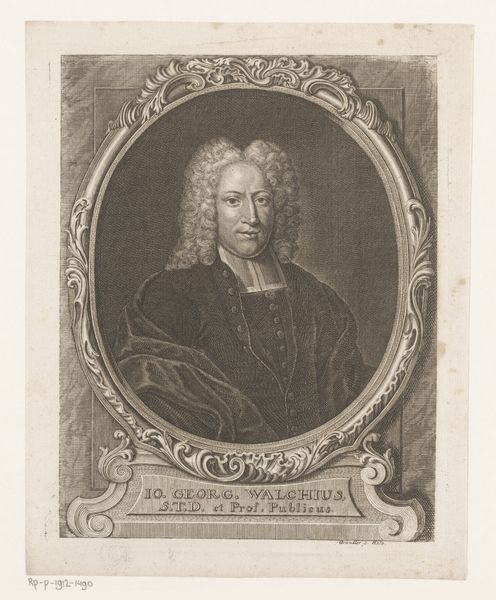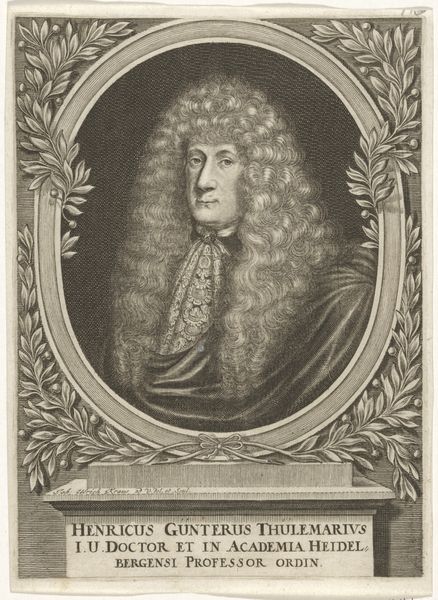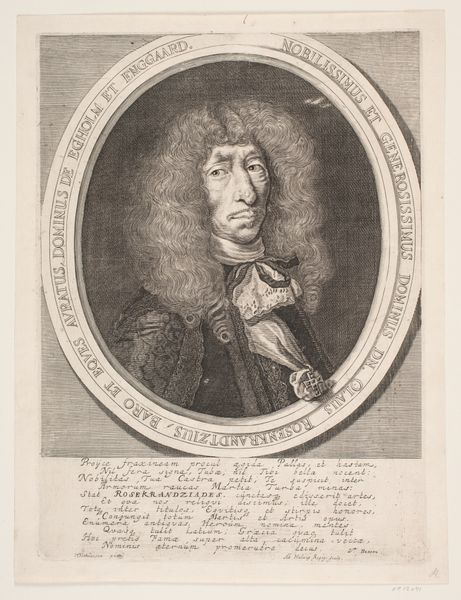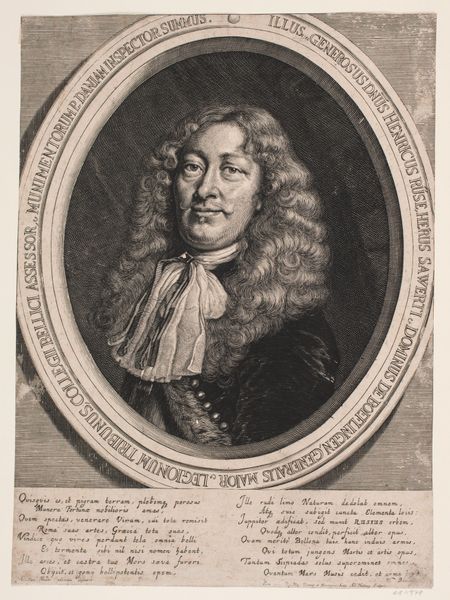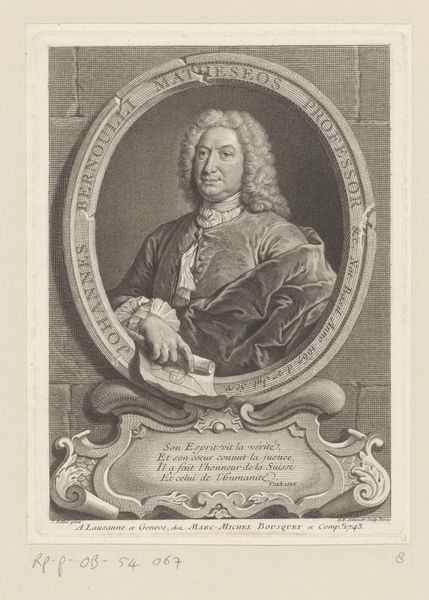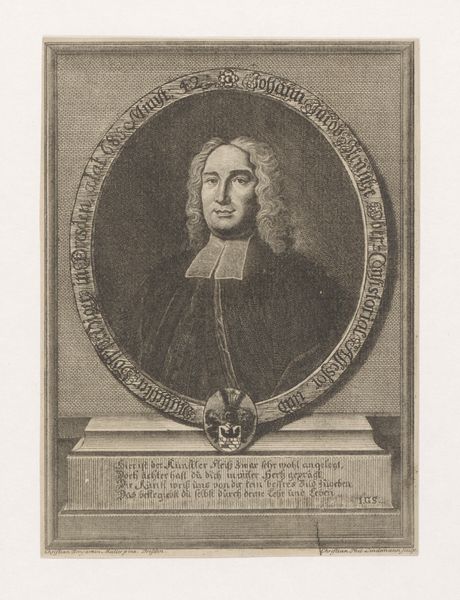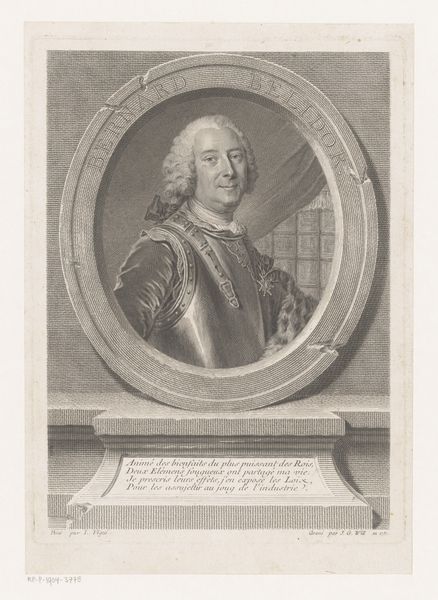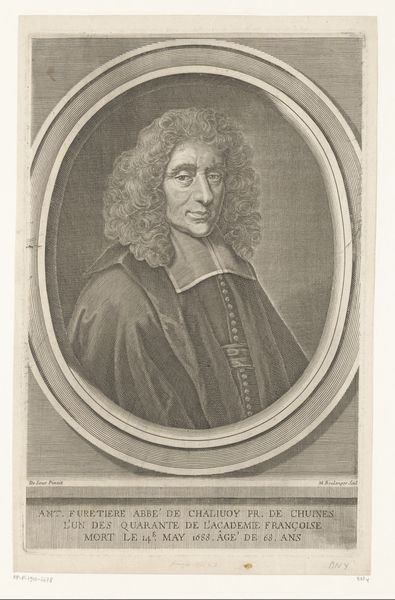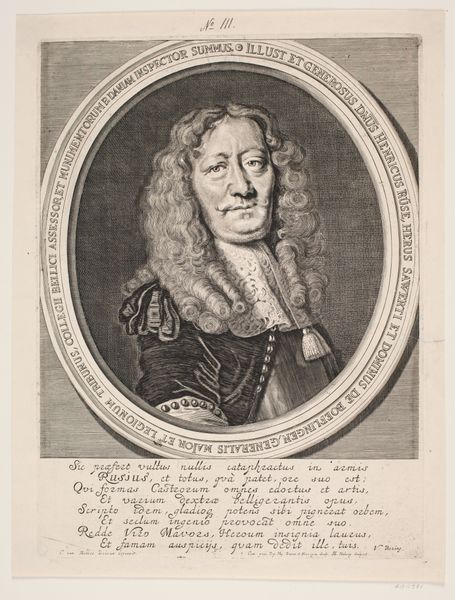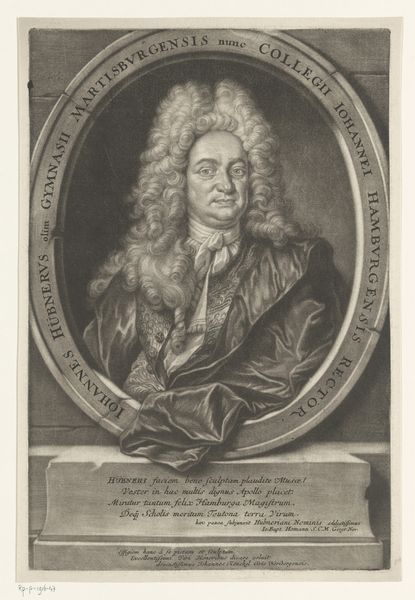
print, metal, engraving
#
portrait
#
baroque
# print
#
metal
#
engraving
Dimensions: 368 mm (height) x 265 mm (width) (bladmaal)
Curator: Albert Haelwegh's engraving, "Peder Reedtz," made sometime between 1663 and 1670, presents an intriguing study in power and representation during the Baroque era. Editor: Indeed, it is. This metal engraving has a certain solemnity to it, doesn't it? The stark contrasts and the weight of the text surrounding the portrait... It all seems very deliberate. How do you interpret this work within its historical context? Curator: I see it as a deliberate construction of identity, typical of its time, but with nuances that reflect Reedtz's particular position in Danish society. Think about the Baroque emphasis on grandeur and the performative aspects of power. The ornate frame, the Latin inscription... What do they communicate to you? Editor: They definitely speak to status and education. It's like Reedtz is being presented as a learned man, deserving of respect. The oval frame almost feels like a window onto his world. Curator: Exactly! And that window isn't just about Reedtz as an individual. It's about reinforcing the social hierarchy, cementing his place within the established order. But let's think critically about whose perspective is being prioritized here. Who is Haelwegh, and what interests might he be serving through this image? Editor: That's a great point. He's not just neutrally portraying Reedtz; he's actively participating in the construction of Reedtz's image. So it's a conversation about power, not just a static representation. Curator: Precisely. Consider too, how the artwork might operate as a tool for reinforcing social hierarchies related to gender. Whose stories are deemed worthy of preservation, and why? How might this influence societal perceptions of acceptable power structures? Editor: This makes me rethink my initial reaction to the piece. It's not simply a solemn portrait, but an active participant in its socio-political world. It is intended to reinforce social expectations in addition to displaying prestige and status. Curator: Absolutely! Understanding these dimensions encourages us to critically engage with not only the art, but also the values of that time. Editor: Thank you, it all became clearer!
Comments
No comments
Be the first to comment and join the conversation on the ultimate creative platform.
